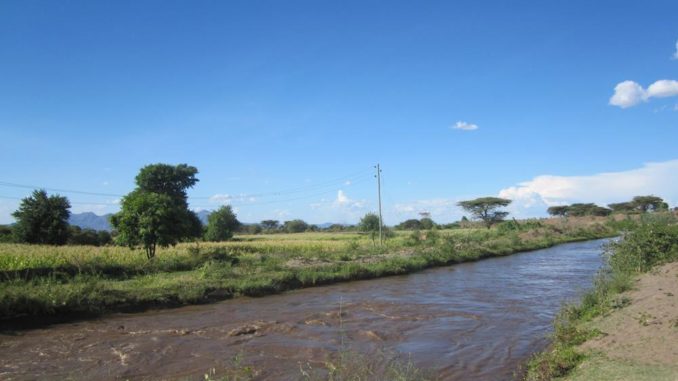
A report stresses the importance of water management which can be used to quantify the costs and benefits of different programs and thereby improve decision making over water allocation and investment policies
ADDIS ABABA (GGGI)―High levels of water vulnerability in Ethiopia’s Awash river basin pose risk to continued economic growth in Ethiopia, according to new report published by Vivid Economics on behalf of the Global Green Growth Institute.
The Awash basin is a critical region of Ethiopian agricultural production, and home to an estimated 15 million people. However, the economy of the Awash basin is highly exposed to hydrological variability. Despite an overall abundant supply of water, the basin routinely suffers from localized water shortages at specific points in time, and is prone to destructive episodes of flood and drought.
The report, Water resources and extreme events in the Awash basin: economic effects and policy implications, seeks to better understand and quantify this critical economic vulnerability, as well as draw out the implications of this for water management policies.
READ: Climate Change May Help Ethiopia, Increase the Country’s Access to Water
The study examines scenarios where agricultural production is effected by water scarcity and extreme hydrological events, and calculates the economic impact to Ethiopia’s agricultural sector as well as the knock-on effects of reductions in the supply of agricultural produce in other sectors of the economy.
“Agriculture is the backbone of Ethiopia’s economy, and is a key driver of the country’s continuing development,” notes Robert Mukiza, GGGI Country Representative for Ethiopia. “Ensuring the appropriate water management policies are in place to sustain this economic engine is of critical importance.”
The study finds that a protracted drought could reduce GDP in the Awash basin by as much as 20% under current economic conditions. As Ethiopia’s economy and population grows rapidly in the coming years, this economic vulnerability will become much more severe unless substantial policy changes are enacted to mitigate water vulnerability.
“The high levels of water vulnerability in the Awash basin translates in to a high value for water, and for the need to prioritize investments that will help mitigate water related risks in the basin,” says Oliver Walker of Vivid Economics. “Policies reflect this value by improving water allocation and investment decisions are therefore much needed.”
To mitigate this vulnerability, the report discusses the efforts of the Awash Basin Authority to improve data collection, forecast supply-demand balances, and develop tariff and permitting schemes for water abstraction and wastewater discharges.
While supporting these activities, the report also stresses the importance of quantifying the economic value of water. This can be used to quantify the costs and benefits of different programs and thereby improve decision making over water allocation and investment policies.
Source: GGGI
